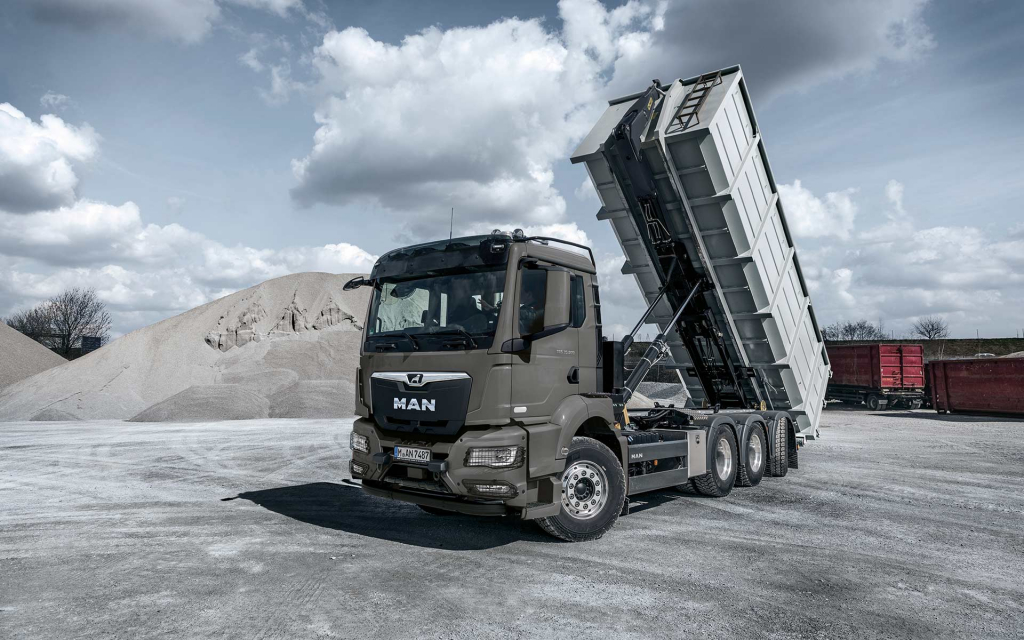
“Easy does it” is the approach to take when tipping goods!
Following a routine will not prevent damage from occurring. You might have dumped goods over a hundred times, and then it suddenly happens: The entire tipping semitrailer twists and hits the deck along with the goods. Here are a couple of tips from MAN ProfiDrive® to stops things from going that badly wrong.
“A successful tipping process starts during loading,” states Andreas Griem, a trainer with MAN ProfiDrive®. “Ideally, you should monitor the loading process from the ladder to make sure that the tipper is filled evenly,” says the expert trainer. Uneven loading can result in the load sliding down unevenly when it is tipped. Incidentally, cargo that is frozen or sticky, such as clay or mud, can also pose this risk. Check the ground prior to tipping: The vehicle should be sitting on as firm a surface as possible and, if possible, the air suspension on the semitrailer should be lowered. “The drop side must be able to open freely. What’s more, uneven tyre pressure, strong crosswinds – especially in the case of volume tippers – but also missing or incorrectly fitted bolts can result in serious damage,” Griem warns. So, keeping the semitrailer tractor as straight as possible is the order of the day: Sitting at an angle reduces its stability massively.
“And, the driver must use the mirrors to keep an eye on the tipping process.”
Even after the tipping process, it is important to remain vigilant!
After unloading, the tipping bridge must be complete before departure be lowered. “Of course it may be that you prefer shortly have to clear the unloading point – but then please slowly and careful, ”warns the professional.
These issues can occur when driving with the body raised:
- Getting caught on bridges, trees, cables.
- Very high centre of gravity: “Picture a ten-metre-long tipping body that is raised all the way. The upper edge will be a good eight metres above the road surface; now one side of the vehicle runs into a ditch,” says Griem, describing a possible scenario.
- The forces we introduce into the vehicle frame when driving: Most of the weight is on the pivoting joints behind the final axle.
- We can’t get away at all (semitrailer combination): This wouldn’t cause any damage, but it is not exactly a good thing! Raising the tipping body takes the load off the drive axle.